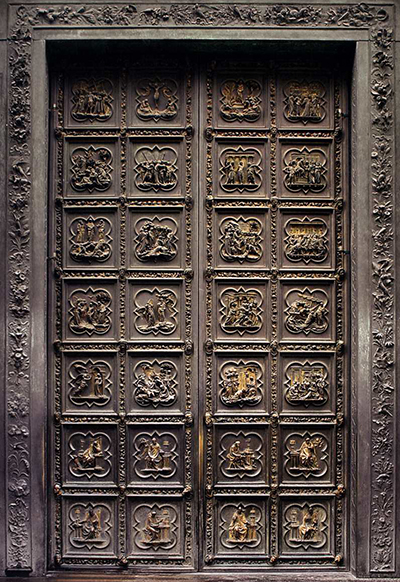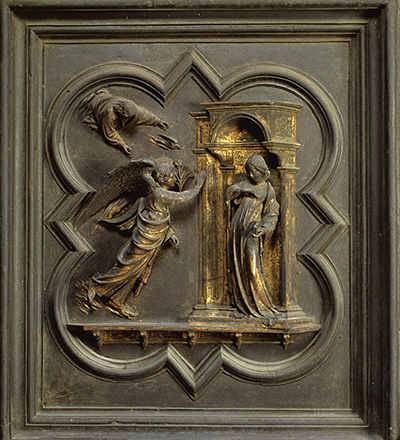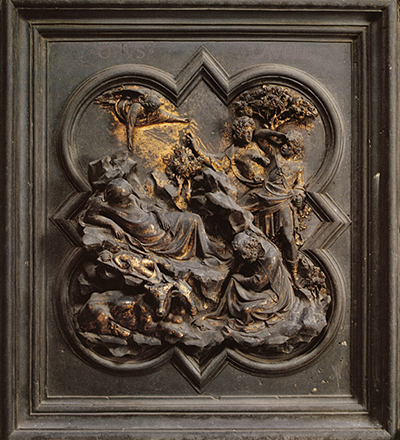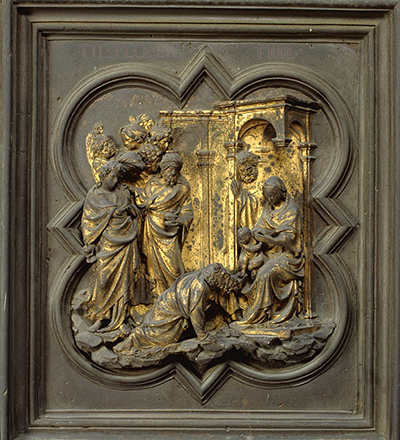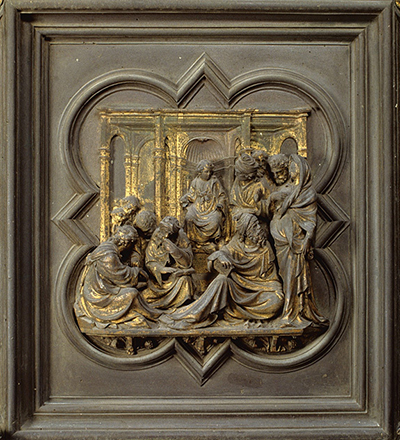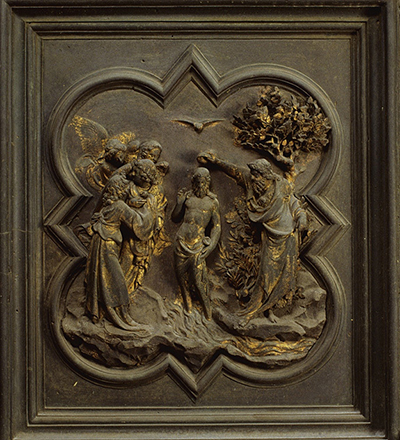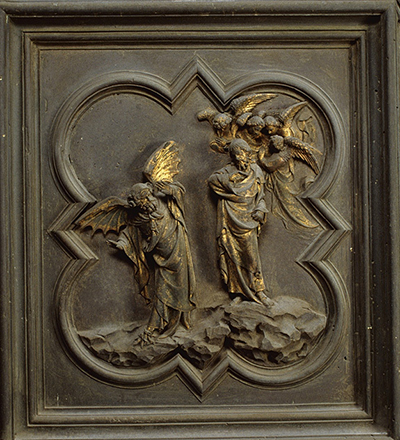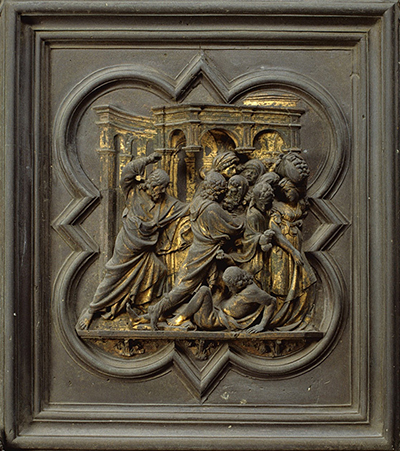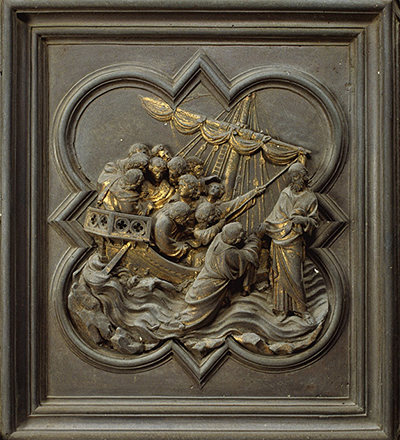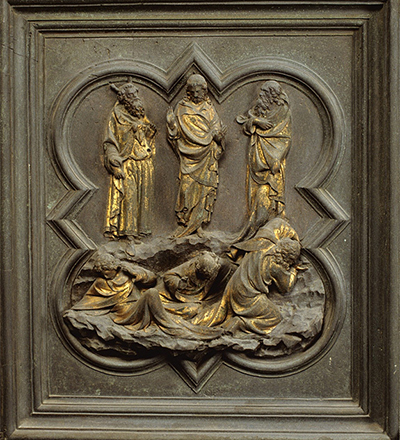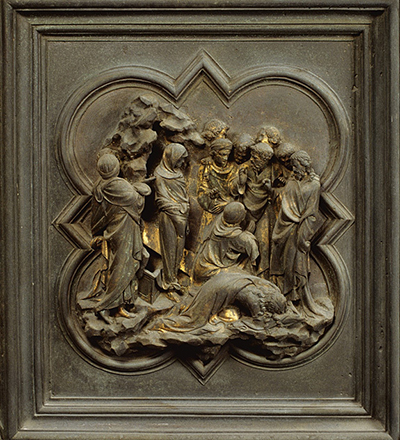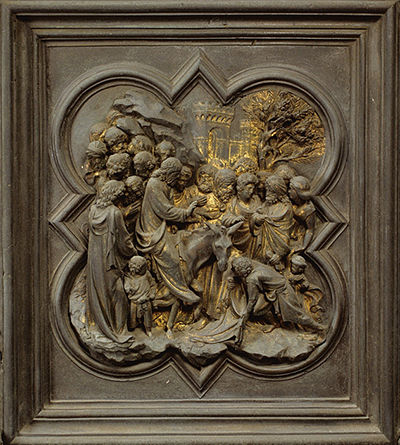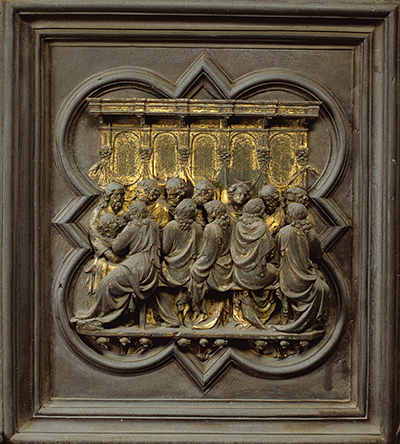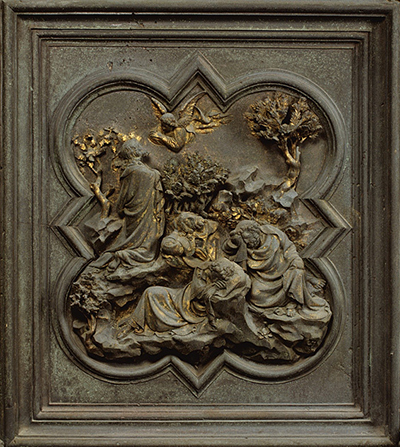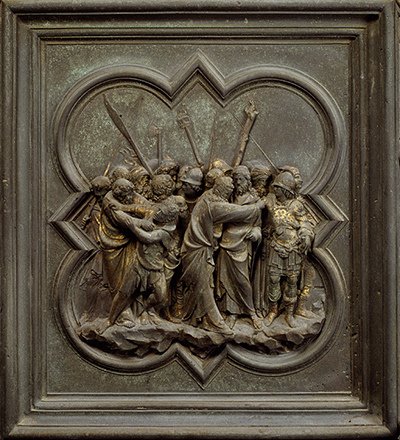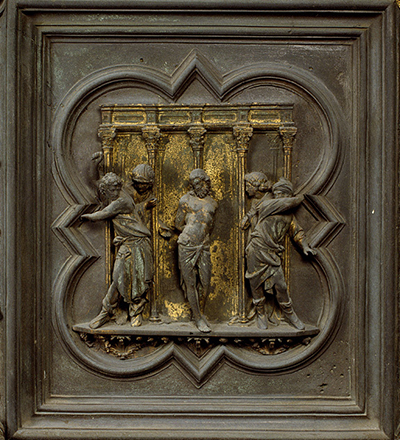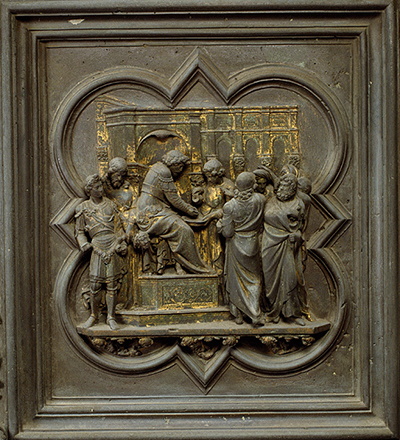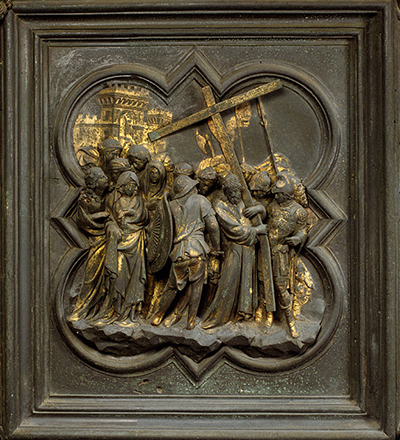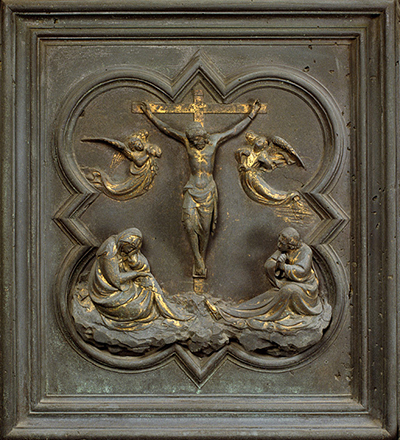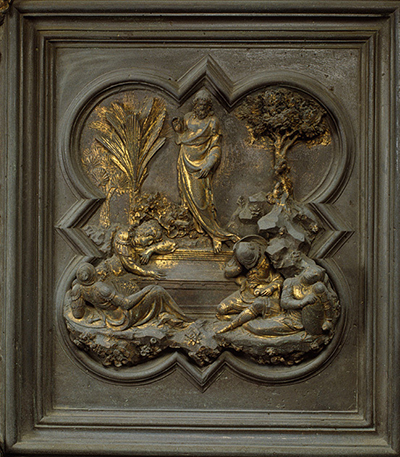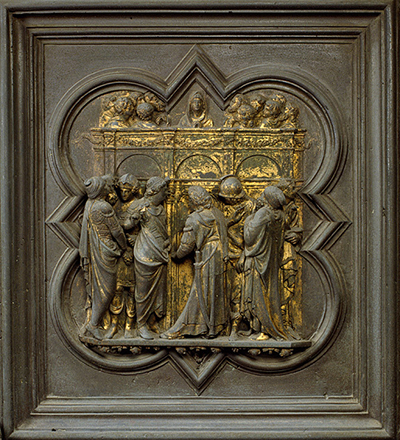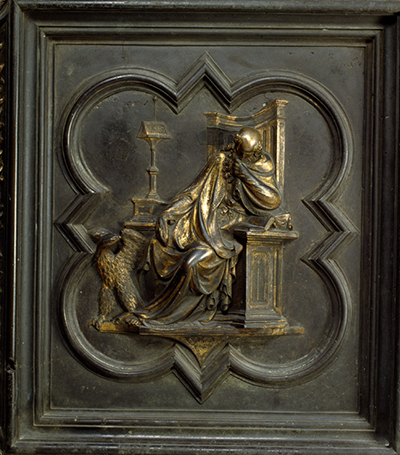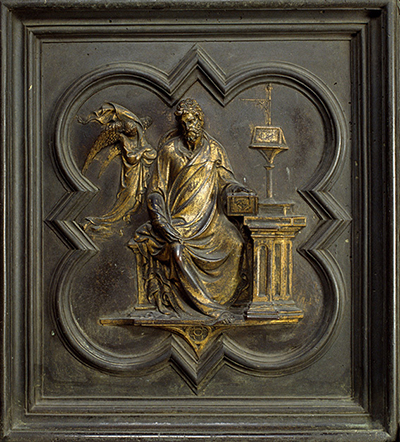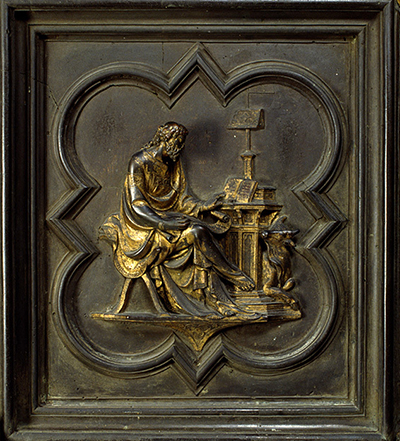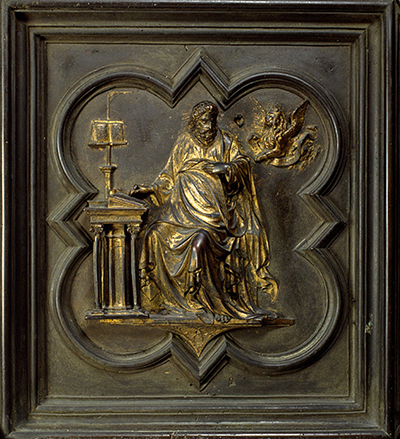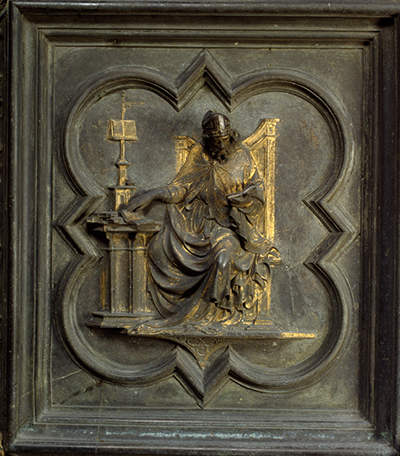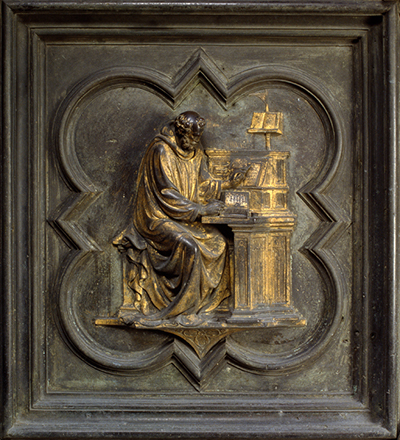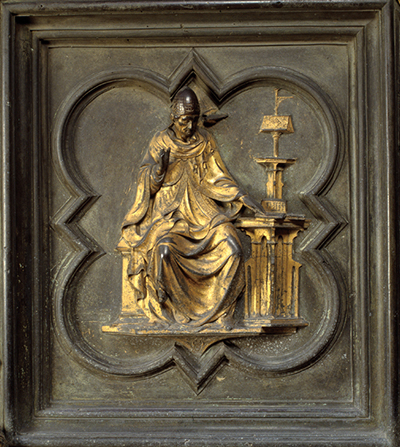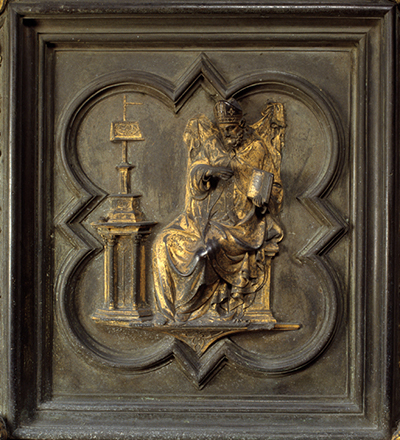Lorenzo Ghiberti produced, with the aid of some of his most highly skilled assistants, these twin bronze doors that were to be eventually placed on the north side of the Florence Baptistery.
The two doors were each decorated by 14 panels laid out in two columns, seven in each. The designs were decided entirely by Ghiberti, but in some cases the sculpture work was completed by his band of helpers. He would only choose the most skilled members of his studio for this signficant project, and also generally do the key areas of each panel himself. It was this set of doors that would raise his reputation to a new level within Florence, and lead to an abundance of other new commissioned pieces.
The completed doors were originally placed in the east side of the baptistery but the decision was then made later to move them to the north, and place his second series there in their place. This was far from unusual as previously a set of doors produced by Andrea Pisano (after a recommendation by Giotto) had been put there before moving across to the south side. Pisano's version came before that of Ghiberti's, around a century earlier. A quick comparison will show that the north doors, as we now refer to them, are very much in the same style as Pisano's earlier contribution, but that Ghiberti's follow-up piece, nicknamed by Michelangelo as the Gates of Paradise, took things in a new direction.
All of Ghiberti's work for the Florence Baptistery was produced in gilted bronze, though much of that has worn away over the many centuries that have passed since his work was finished. Bronze was particularly expensive at that time, around ten times the price of stone, but this was an artist who refused to cut corners financially and was well backed by his donors to create exactly the finished that he most desired. In many other cases across art history this has sadly not been the case, as changes have had to be made, sometimes during the project, in order to deal with unforeseen circumstances. (See Michelangelo's work in the Sistine Chapel, for example, where elements of the fresco were deemed too revealing and had to be covered up.)
The significance of the North Doors to the career of Lorenzo Ghiberti plus the Renaissance movement as a whole has ensured that endless research has been completed on the artist's dealings with the donor. Contracts have been uncovered, at least in part, which outline the instructions that he was given for this work and also how their final payment would be decided upon. The artist also revealed further information in his later writings, such as Commentarii. The signed contract included a stipulation that only his hand could work on the figures and trees (the main reason for his winning the original competition), pointing to their particular importance as well as the acceptance by the donor that some of his assistants would indeed work on other areas of the panels.
The agreement was signed on the 23rd of November, 1403, when the artist was in his early twenties. Perhaps his youthful age meant that the contract had to be made out to "the goldsmiths Lorenzo di Bartolo and Bartolo di Michele his father" instead, yet there was never any doubt about who would design and create the majority of the work. The awarding body were the Arte di Calimala and they agreed to cover all expenses to allow the artist to concentate purely on his "labour". Their requirements included bronze, charcoal, wax, sand and clay. There also needed to be a furnace built to cast their designs plus wages for their assistants.
There was an annual payment of 200 florins to Ghiberti until the series of panels was completed plus a final one-off amount that was to be decided upon by the commissioning guild who would consider the quality of the work before setting this bonus. The annual payment was to become Ghiberti's standard annual change from there on in and he retained this handy knack for negotiating very generous terms for each of his commissioned artworks.
The original target was to complete the entire project within ten years. As early as 1407 it was accepted, in writing, that this was unrealistic and the period would be extended considerably. The artist's father was also removed from much of the new agreement having been placed alongside his son in the initial contract. The doors were finally installed on the 19th of April, 1424, some 21 years after the initial contract had been signed.



